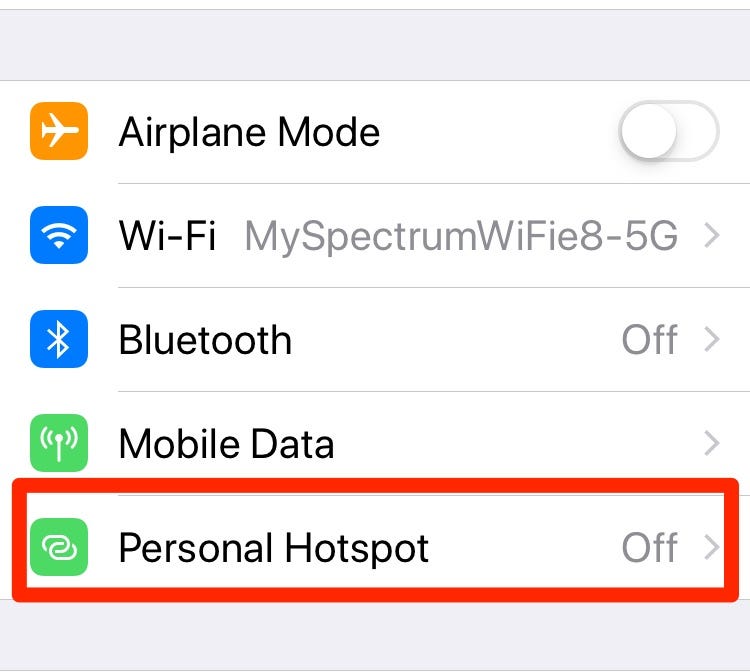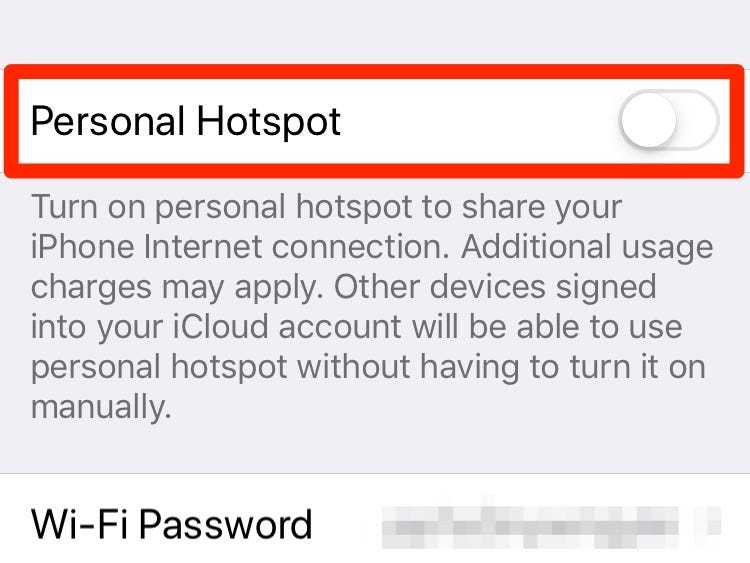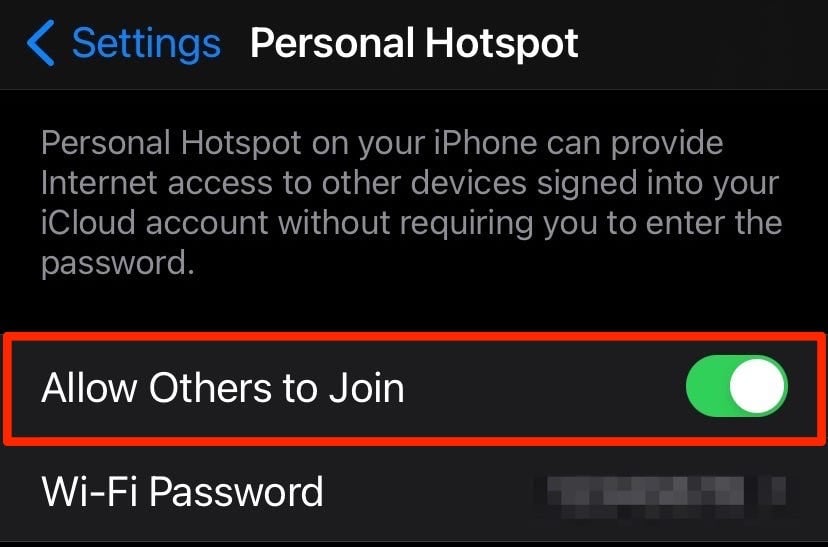
Tim Robberts/Getty Images
- Mobile hotspots serve as mobile internet networks by converting an LTE connection into a Wi-Fi signal that other devices, like laptops or tablets, can use.
- Mobile hotspots can come as pocket-sized individual devices or built-in to your smartphone.
- Mobile hotspots typically rely on a data plan, which means those without unlimited data plans will likely want to be conscious of their hotspot use.
- Mobile hotspots can connect up to 10 individual devices, are password and WPA2 security protected, but have limited range and might be slower than your Wi-Fi connection.
- Visit Insider's Tech Reference library for more stories.
When traveling somewhere there isn't Wi-Fi, having a mobile hotspot can be very useful.
A mobile hotspot, otherwise known as a personal hotspot, is a device that lets users connect to the internet by acting as a localized Wi-Fi network.
There are ways you can get a portable hotspot sold separately, but nowadays, many mobile hotspots come as a feature on your smartphone.
What is a mobile hotspot?
A mobile hotspot is a device that has the ability to cast a wireless signal for other devices to connect to while on-the-go. This is not to be confused with a hotspot, which can be picked up in public places like hotels, malls, and coffee shops, where buildings or businesses have private networks that offer free Wi-Fi.
Mobile hotspots generally operate by taking an LTE connection, sometimes from your phone, and converting it into a Wi-Fi signal. You can then "connect" your computer or another device to it the same way those devices would connect to a home or public Wi-Fi network.
Physical mobile hotspots are small enough to fit into your pocket and have a generally reliable battery life, sometimes up to one day. They can be utilized when about in public, say in a park or at the beach, while traveling abroad, or anywhere your LTE connection works. They're able to connect to any Wi-Fi-based device, such as a laptop, smartphone, tablet, or game console.
While hotspots have become pretty standard on mobile smartphones, accessing them might incur additional costs depending on your carrier and device. Your mobile hotspot's speed and longevity will also depend on your data plan and how many gigabytes you have.
Digital security and reliability with mobile hotspots
Mobile hotspots are a great but imperfect solution. While they can go practically anywhere, they are not as fast as an at-home or in-building broadband or fiber Wi-Fi connection. With them being mobile, their range is also not far when connecting other devices to it.
Having access to data, you can create a Wi-Fi signal wherever you are, but because smartphone hotspots are connected to your mobile device, they can take off a lot of battery life rather quickly.

Westend61/Getty Images
On the upside, your mobile hotspot's Wi-Fi network can be protected with WPA-2 encryption, making it just as secure as any home router. Just be sure to keep your password protected and enabled. If someone gets ahold of it or you aren't using password protection, anyone will have the ability to connect to your hotspot and access data transmitted through it.
Does my phone have a mobile hotspot?
Many modern smartphones have a built-in hotspot feature, which you can likely set up and enable somewhere in your device's settings app. In general, many carriers and devices offer the service so long as you have a minimum of 4G LTE service, though support for a 5G network will likely improve your experience.
Most smartphone mobile hotspots allow you to connect multiple devices to your network, in some cases up to 10. Just know that when sharing this kind of network with other people, you may make an already noticeably slower experience even slower.
Depending on the device, you can rename your hotspot and change its password from the defaults, hide your device so others can't see your network, and decide whether you want to use WPA2 security or go without it.
Depending on your device, you may be able to enable your mobile hotspot and connect to other devices via Bluetooth or USB tethering.

Justin Paget/Getty Images
For those without an unlimited data plan, it's important to note that the hotspot is drawing from your data caps, which means you can run out - and you may do it much quicker than regular browsing on your phone, depending on what you're using your mobile hotspot for. Even those with unlimited plans may find their experience slowed if their service carrier slows speeds after certain data caps are hit.
Once connected, connect a computer or other smartphone and surf the web, stream videos, and listen to music just like a regular internet connection.
How to enable your mobile hotspot on iPhone
- Click on the Settings app.
- Tap Personal Hotspot.

You can find the Personal Hotspot option in the first section of the Settings menu.
Abbey White/Insider
Quick tip: If you don't see it listed on your Settings page, locate "Cellular Data" and check there.
- Tap the slider next to "Personal Hotspot" to turn your hotspot on.

The slider will start greyed out to indicate it's off.
Abbey White/Insider
Quick Tip: You can connect to another device to access the personal hotspot in three different ways using Wi-Fi, Bluetooth, or a USB cable.
- On newer iOS versions, tap "Allow others to join" in the Personal Hotspot menu to ensure other device users can access your network.

New iOS versions require you to enable hotspot sharing.
Abbey White/Insider
Quick tip: Once a device is connected, a blue indicator at the top of your iPhone screen will tell you that your hotspot is on and how many devices are connected to it.
- Now, go to the device you want to connect to your hotspot and open your list of Wi-Fi networks.
- Click on the name of your phone's mobile hotspot in the list of available Wi-Fi networks and enter the hotspot password to join.







